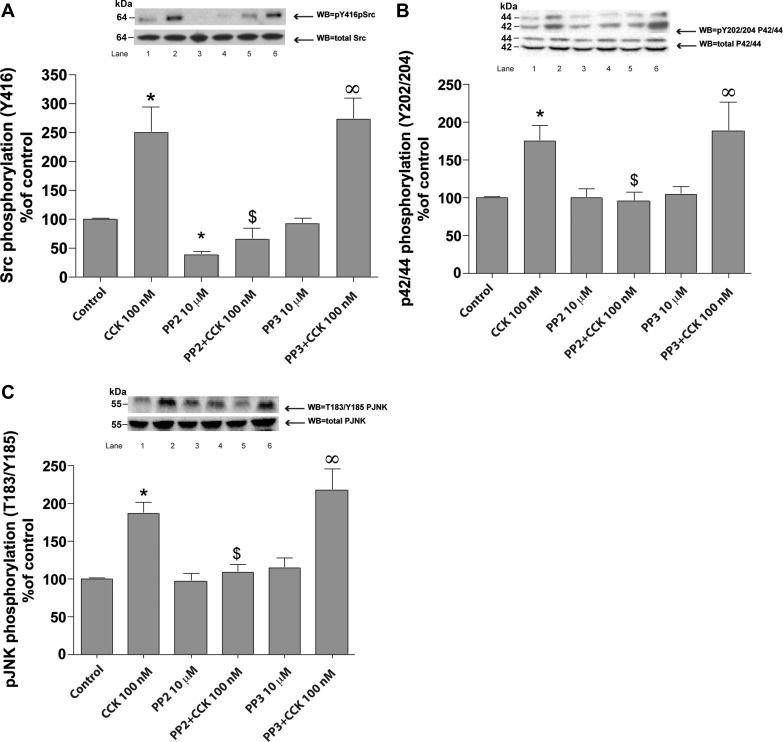Fig. 1.
Effect of 4-amino-5-(4-chlorophenyl)-7-(t-butyl)pyrazolo[3,4-d]pyrimidine (PP2) and 4-amino-7-phenylpyrazol[3,4-d]pyrimidine (PP3) on COOH-terminal octapeptide of cholecystokinin (CCK)-mediated stimulation of the Src family of kinases (SFKs), p42/44, and JNK in pancreatic acinar cells. Rat pancreatic acinar cells were pretreated with no additions or with PP2 (10 μM) or PP3 (10 μM) for 1 h and then incubated with no additions (control) (all with final-0.1% DMSO) or with 100 nM CCK for 2 h and then lysed. Whole cell lysates were submitted to SDS-PAGE and transferred to nitrocellulose membranes. To determine SFK (A), p42/44 (B), and JNK (C) activity, we assessed the phosphorylation of Y416 Src, Y202/204 p42/44, and p-T183/Y185 JNK that correlate with their activity. Membranes were analyzed using anti-pY416 Src, anti-pY202/204 p42/44, and anti-p-T183/Y185 JNK antibodies. Total Src, JNK, and p42/44 antibodies were used to verify loading of equal amounts of protein. The bands were visualized using chemoluminescence, and quantification of phosphorylation was assessed using scanning densitometry. Top, a representative experiment of 3 others; bottom, each set is the mean of 5 experiments. Lanes in top are in the same order as shown for the means. *P < 0.05 vs. control, ∞P < 0.05 vs. PP3 alone, and $P < 0.05 comparing stimulants (CCK) vs. stimulants preincubated with PP2 or PP3, respectively.

